- How to Propagate Monstera Guide: The Three Ways to Succeed - September 17, 2021
- Escargot Begonia: Why Is The Rex Begonia So Rare? - August 31, 2021
- Rieger Begonia: When You Can Expect The Hiemalis Begonia To Flourish - August 31, 2021
This Pothos is a patented cultivar created from Marble Queen Pothos. It was designed to feature more distinct color variegation and to grow in a more pleasing formation. While this plant may have been designed to be fancy, it is not fussy. N’Joy Pothos is a typical Pothos plant that is easy-going and gorgeous.
How to Identify Njoy Pothos
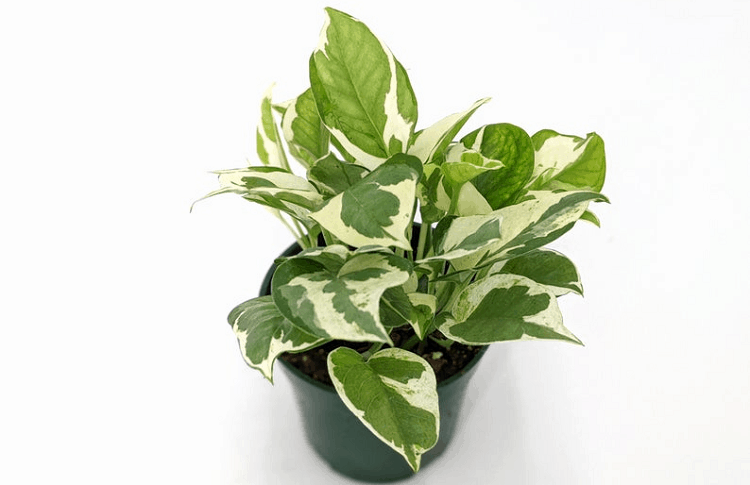
Njoy takes after its mother, Marble Queen Pothos in many of its features, but you should still be able to tell them apart. When looking for a Njoy Pothos, you will need to look for these key identifiers:
- Heart-shaped leaves
- Leaves that are distinctly variegated in dark green and white or cream
- Leaves that have a smooth texture
- Leaves that are mildly glossy
- Leaves that are smaller than most other Pothos varieties
How to Grow Njoy Pothos from Seed
Even though growing Pothos plants from seed is difficult, it is possible to do so. Try it out for yourself by following these steps:
- Purchase seeds from a reputable seller (sellers who price their seeds between $1 and $2)
- Soak the seeds in water for 24 to 48 hours
- Fill either a seed starter tray or a small plant container with a seed starting soil mix
- Plant the seeds in the soil mix
- Water the soil so that it is moist but not soggy
- Place either plastic wrap or the lid of the tray over the top of the container
- Set the container in a warm spot that gets plenty of bright, indirect sunlight
- Once sprouts appear above the soil level, acclimatize them to open-air
- Once the plants are established, move them to a more permanent plant container
How to Propagate Njoy Pothos
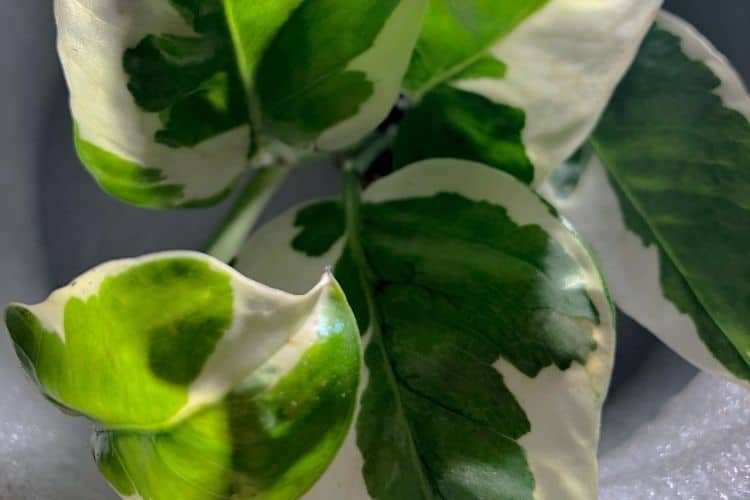
Stem cuttings are the easiest and most guaranteed method for propagating new Pothos plants. It does not matter which Pothos variety you are attempting to propagate, this is the way to go. The steps for doing this are as follows:
- Using a sterile cutting utensil, cut off a healthy stem that includes a leaf and a node
- Set the stem in a container filled with water
- Set the container in a place that gets bright but indirect sunlight
- Change the water every other week
- Once roots are an inch long, plant the stem in a container filled with potting soil that contains a mixture of perlite
- Water the potting soil and keep it moist but not soggy
Njoy Pothos Growing Conditions
Pothos plants come from islands in the South Pacific where temperatures (between 65 and 80 degrees Fahrenheit) and humidity levels (between 50% and 70%) are high. This is why it is recommended that you provide your Pothos plants with a Pebble tray or a Plant humidifier to provide extra humidity and a Plant Heat Mat to provide extra warmth. With these, you can keep your plant comfy and cozy while not getting stuffy and sticky in your own home.
If you don’t mind providing this climate indoors, then there is no need to purchase the extra equipment, but if this combination of high humidity and high temperatures sounds stuffy, you might want to splurge for them.
How to Plant Njoy Pothos
Pothos plants need new soil and possibly a bigger plant container every two to three years. The new soil will provide the plant with new nutrients, while the new container will provide the plant with adequate space to grow. Look for the following signs to know whether or not your plant needs repotted:
- Compacted Soil
- Roots that are crowded and growing into a ball formation
- A plant that looks too big for its current container
The steps for repotting a Pothos plant are:
- Fill a new container that is two inches larger than its previous container with potting soil
- Create a hole in the soil for the plant to set inside
- Carefully remove the plant from its current container by laying the plant on its side and then pulling the pot off the root system
- Gently dust off any excess soil from its roots
- Set the plant into the hole in the new container
- Spread the soil around so that the plant is secure in its new container
- Water the plant
- Set it in a warm spot with indirect sunlight
Njoy Pothos Potting & Soil
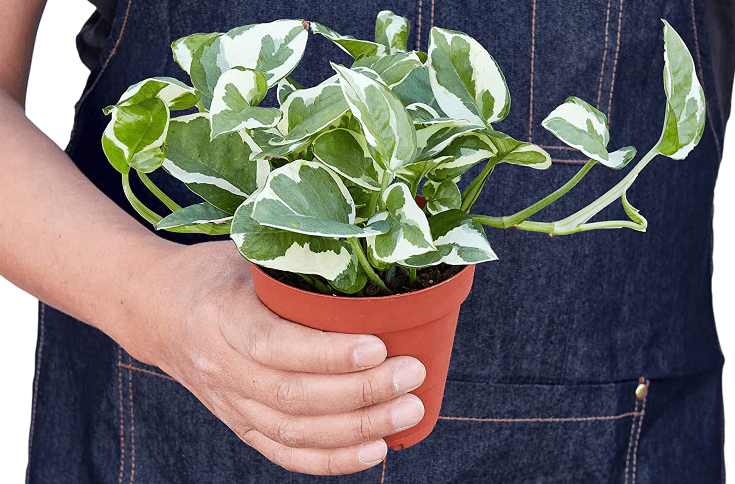
Soil is extremely important when it comes to potted plants. If you use the wrong type of soil, it may cause root rot or a lack of moisture. Learn what type of soil your plants require and you will avoid a lot of headaches. Fortunately, Pothos plants, no matter the variety, all require soil that is able to drain well but still hold some moisture. This is why Happy Frog potting soil is consistently recommended for all Pothos varieties.
Don’t let your plant down when it comes to selecting a plant container. Even if you get the right type of soil, if it is sitting in a container with no drainage, you will still have problems. Select a plant container that is sturdy, has drainage holes, and if possible, is made from plastic. Plastic containers will retain some moisture and heat, which is what Pothos plants need.
Drainage is not the only issue to consider when you select soil or a place to plant your Pothos plants. Remember that this plant needs soil with pH levels that range between 6.1 and 6.5.
- Test your soil with a Soil pH Meter.
- Adjust your soil with wood chips or peat moss for more alkaline soil and with bone meal or ground eggshells for more acidic soil.
- For more insight on how to adjust soil pH levels, read this article.
Njoy Pothos Water Requirements
Technology can be a wonderful thing even in the natural world. Plant watering apps are here to help busy gardeners track when a plant has been watered, set reminders to water it, and get answers to common plant care questions. Try one for yourself and see if you don’t agree that these things are wonderful.
As far as watering a Njoy Pothos goes, remember that an overwatered Pothos runs the risk of getting root rot. Always test the top two inches of the plant’s soil before watering it. If those two inches are dry, then give it a drink. If those two inches are moist, then wait another day.
Also, the key to watering a Pothos plant correctly is to water it deeply. Give it enough water that the excess water flows out of its container’s drainage holes. If any excess water accumulates in the container’s saucer, it should be discarded.
Njoy Pothos Light Requirements
Once again, modern technology can be a wonderful assistant. Use a Light meter to select a location for your Pothos plant. This way you can be sure that your plant is receiving the amount of sunlight it needs.
The type of lighting you are looking for is bright but indirect. Njoy Pothos can get burnt and its leaves will dry out when exposed to direct sunlight. However, if it is given too light sunlight the plant will grow sluggish and lose its color variegation. If this type of sunlight is unavailable in your home, try using grow lights instead.
Best Njoy Pothos Fertilizer
This plant is not a heavy feed, just like every other Pothos variety. The only reason why you would feed a Njoy Pothos plant is that it needs a boost during its spring growing season, its growth rate has slowed, and/or it is beginning to look weak.
If your Njoy Pothos looks like it needs a boost, try using either worm compost or a 5-5-5 fertilizer.
Best Njoy Pothos Companion Plantings
There is nothing better than a room full of luscious, green-leaved, tropical plants. Set yourself, and your plants, up for success by clustering them together. Good looks aside, this also provides tropical plants with excess amounts of humidity. This is solidarity at its finest.
With so many choices for plant companions, it can be overwhelming, but that should not prevent you from trying. Here are just three suggestions that would be perfect next to your Njoy Pothos.
Any Other Type of Pothos
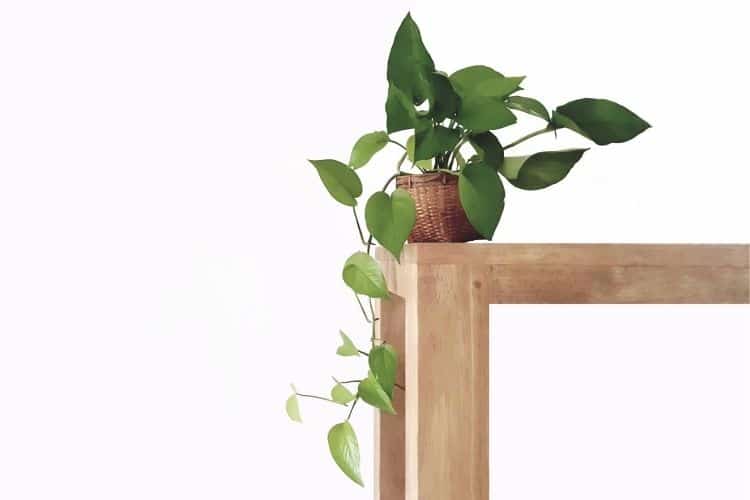
Just imagine looking at a shelf or a windowsill full of beautiful vining Pothos plants. It will transport you to the South Pacific islands in no time. Give these easy-going plants some space in your home and they will reward you with beauty, cleaner air, and a chance to grow your gardening skill without stress.
Pros
- Pothos all have the same care requirements
- Pothos plants are very unfussy plants
- Pothos will provide each other with extra humidity
Cons
- Most Pothos varieties are toxic
Split Leaf Philodendron
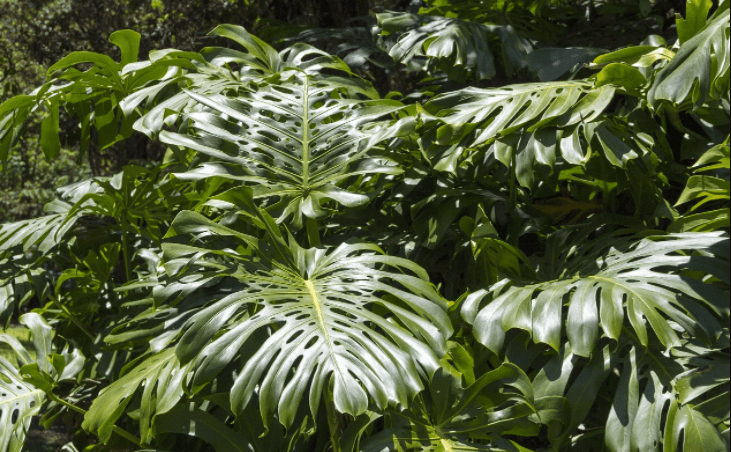
Nothing says tropical quite like a Split Leaf Philodendron. If you are going for a tropical plant feature in your home, you need this plant. This variety is rather easy-going and will pair well with any gardener who doesn’t want to deal with a fussy plant.
Pros
- Split Leaf Philodendron has care requirements that are similar to Njoy Pothos
- Split Leaf Philodendron is easy to grow and care for
- Split Leaf Philodendron is easy to propagate via stem cuttings
- Split Leaf Philodendron can purify the air from common pollutants
Cons
- Split Leaf Philodendron is toxic
Peperomia Hope
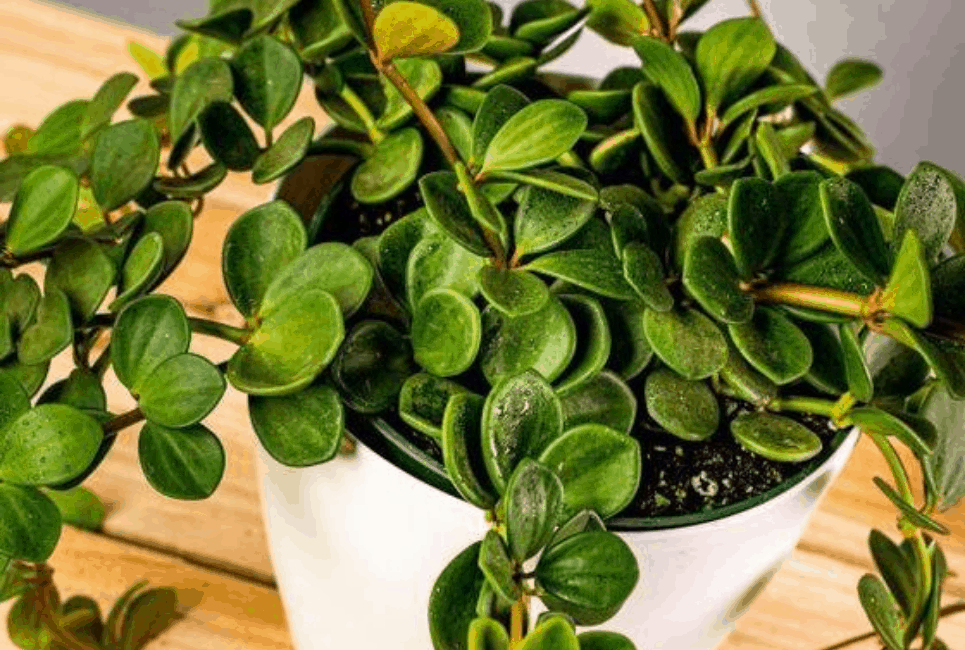
This is a different sort of plant because it is a succulent that grows in tropical areas of South and Central America. Fortunately, as is the case with most succulent varieties, it is incredibly easy to grow.
Pros
- Peperomia Hope has care requirements that are similar to Njoy Pothos
- Peperomia Hope is easy to grow and care for
- Peperomia Hope is not toxic
- Peperomia Hope stays small and compact
Cons
- None
Njoy Pothos Diseases and Common Problems
The common problems faced by all varieties of Pothos plants are not huge if treated right away; in fact, most of them can be prevented altogether when the plant is properly cared for. Here are the most common issues faced by Pothos plants:
Aphids
This type of infestation looks likes tiny insects that are shaped like teardrops. To deal with an infestation of aphids, follow these steps:
- Spray the plant with a mixture of neem oil and soapy water
- Wipe down the leaves of the plant
- Apply neem oil to the leaves to prevent another infestation
Browned or Browning Leaves
This is often a sign that the plant is not receiving adequate amounts of moisture. Tweak its water regimen and provide it with more humidity and the plant should recover.
Other problems that show up as browning on leaves are too much fertilizer or too much direct sunlight. If you suspect either of these may have caused your plant’s leaves to turn brown, try moving it to a shadier area to avoid direct sunlight or saturate the soil of the plant to remove excess fertilizer.
Burnt Edges on Leaves
This is a sign that the plant is either under-watered, over-exposed to sunlight, over-fertilized, or possibly all three. The plant can recover if you tweak its water regimen, move it to a shadier spot, and remove the excess fertilizer from its soil.
If you are unsure which problem is causing the burnt edges on your plant’s leaves, try one treatment for a few weeks before switching to another.
Mealybugs
Evidence of an infestation of mealybugs is small white spots that look like cotton on leaves and stems. To deal with an infestation of mealybugs, follow these steps:
- Spray a solution of alcohol and water on the leaves
- Rub the leaves with a cotton ball
- Coat the leaves in neem oil or insecticidal soap every few days
Root Rot
Evidence of this problem is leaves that have turned brown or black. To treat this problem, let the soil dry out completely and set the plant in a place where it will get plenty of airflow. If it is still struggling with too much water in its container, follow these steps:
- Remove the plant from its container
- Wash off all the dirt from its roots
- Cut off any roots that are rotten
- Replant the plant in a clean container with fresh soil
- Wait to water it for a few days
Scale Insects
This type of infestation looks like tiny brown bumps on the backs of the plant’s leaves. To deal with this type of infestation, follow these steps:
- Spray them off with a hose
- Wipe the remainder off with neem oil and a cloth
- Prevent them from returning by coating the leaves with neem oil regularly
Spider Mites
This type of infestation looks like webbing spread over the plant’s leaves and stems. To deal with this type of infestation, follow these steps:
- Spray the plant with a mixture of 1 quart of warm water, 1 tsp. of dish soap, and 2 tsp. Of neem oil
- Wipe off the leaves and stems
- Repeat as necessary
Yellowed or Yellowing Leaves
This is a sign that the plant has been overwatered. If its water regimen is adjusted it should recover.
Njoy Pothos Treatments and Maintenance
Pothos plants that are cared for regularly will have a better chance of avoiding common problems and recovering from them as well. The best way to prevent harmful diseases and pest infestations is to provide the plant with regular care and cleaning. Here are a few tips to help keep your plant as healthy as it can be.
- Check it for signs of disease and infestations regularly, and treat them quickly.
- Clean the plant’s leaves regularly with neem oil.
- Learn how to properly water and feed your plant.
- Make sure your plant is set in an area with adequate amounts of sunlight, heat, and humidity.
- Mix diatomaceous earth into the soil of potted plants.
Where to Buy Njoy Pothos Seeds Online
Pothos seeds from every variety are difficult to find because these plants are easier to propagate via stem cuttings and Pothos plants do not produce seeds very often as houseplants. When you search for seed sellers, look for those who have good ratings and price their seeds between $1 and $2 per seed.
Where to Buy Mature Njoy Pothos Online

Fortunately, these plants are easy to find in many online shops. Some of the best places to purchase a Njoy Pothos are shops on Etsy. Here are a few that have great ratings:
FAQs
Question: Is Njoy Pothos Toxic?
Answer: This cultivar is no different than other Pothos varieties in that it is toxic to pets and children. If someone has consumed one of these plants, call a medical professional or poison control immediately.
Question: Should Njoy Pothos be Given a Support?
Answer: Yes, this is a vining plant that will benefit from a mossy pole in its container.
Question: How Large will Njoy Pothos Grow?
Answer: This plant’s vines can grow up to ten feet long.
In Conclusion
Njoy Pothos is such a pretty plant and its easy-going nature will provide you with the assurance that it will grow even if you get busy or distracted. Why not order one today and start your own tropical paradise at home?

